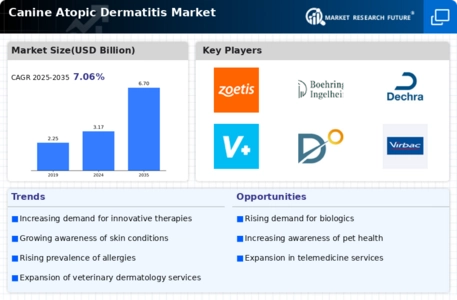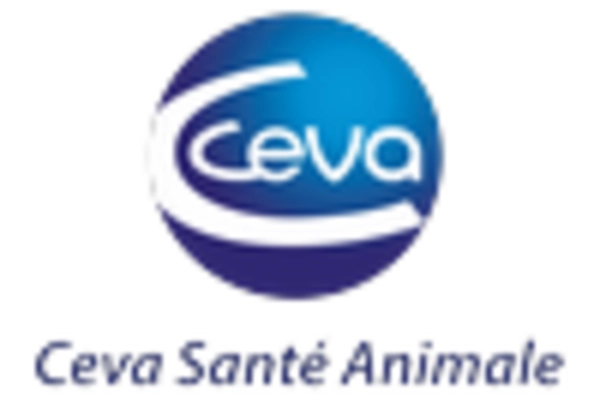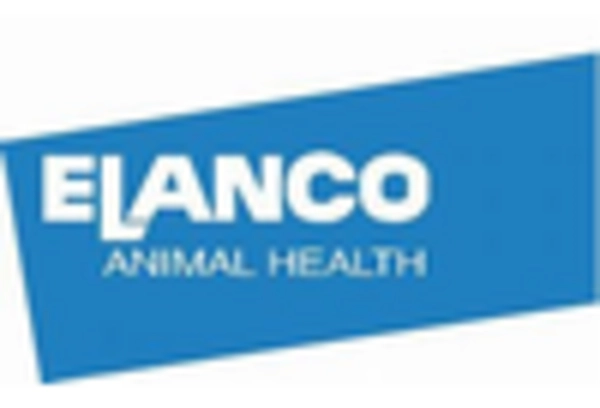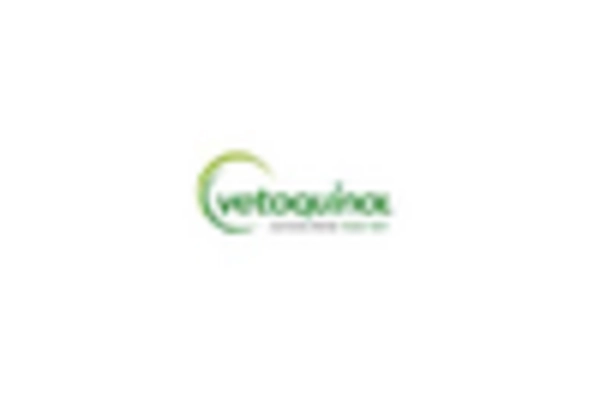Rising Pet Ownership and Spending
The rise in pet ownership and the corresponding increase in spending on pet care are driving the Canine Atopic Dermatitis Market. As more households welcome dogs into their families, the demand for comprehensive healthcare solutions, including those for atopic dermatitis, is on the rise. Recent statistics indicate that pet owners are willing to invest significantly in their pets' health, with expenditures on veterinary care and specialized treatments increasing annually. This trend is particularly evident in urban areas, where pet owners are more likely to seek advanced medical interventions for their dogs. Consequently, the market for canine atopic dermatitis treatments is expected to expand, fueled by this growing willingness to spend on pet health.
Advancements in Veterinary Dermatology
Advancements in veterinary dermatology are significantly influencing the Canine Atopic Dermatitis Market. The development of new diagnostic tools and treatment modalities has enhanced the ability of veterinarians to accurately diagnose and manage atopic dermatitis in dogs. Innovations such as monoclonal antibodies and targeted therapies are gaining traction, providing pet owners with more effective options. The market for these advanced treatments is projected to grow, with estimates suggesting a compound annual growth rate of over 10 percent in the coming years. This trend indicates a shift towards more specialized care, as veterinarians increasingly adopt these advanced techniques to improve the quality of life for affected dogs.
Increased Incidence of Allergies in Dogs
The increased incidence of allergies in dogs is a critical factor propelling the Canine Atopic Dermatitis Market. Environmental factors, such as pollution and changes in diet, appear to be contributing to a rise in allergic reactions among canines. Studies suggest that the prevalence of atopic dermatitis is on the rise, with many dogs exhibiting symptoms related to environmental allergens. This trend is prompting pet owners to seek effective treatments, thereby driving market growth. The demand for allergy management solutions, including topical treatments and immunotherapy, is likely to increase as more pet owners recognize the need for proactive care in managing their dogs' health.
Regulatory Support for Veterinary Products
Regulatory support for veterinary products is fostering growth in the Canine Atopic Dermatitis Market. Governments and regulatory bodies are increasingly recognizing the importance of addressing canine health issues, leading to streamlined approval processes for new treatments. This supportive regulatory environment encourages pharmaceutical companies to invest in research and development of innovative therapies for atopic dermatitis. As a result, the market is witnessing a surge in the introduction of novel products designed to alleviate the symptoms of this condition. The anticipated increase in the number of approved treatments is likely to enhance competition and provide pet owners with a wider array of options for managing their dogs' atopic dermatitis.
Growing Awareness of Canine Atopic Dermatitis
The increasing awareness surrounding canine atopic dermatitis is a pivotal driver in the Canine Atopic Dermatitis Market. Pet owners are becoming more informed about the symptoms and implications of this condition, leading to a surge in demand for effective treatments. This heightened awareness is reflected in the rising number of veterinary consultations, as pet owners seek professional advice for their dogs suffering from skin allergies. According to recent data, the prevalence of atopic dermatitis in dogs is estimated to affect around 10 to 15 percent of the canine population, which underscores the necessity for targeted therapies. As awareness continues to grow, the market is likely to expand, with more innovative solutions being developed to address this common ailment.

















Leave a Comment